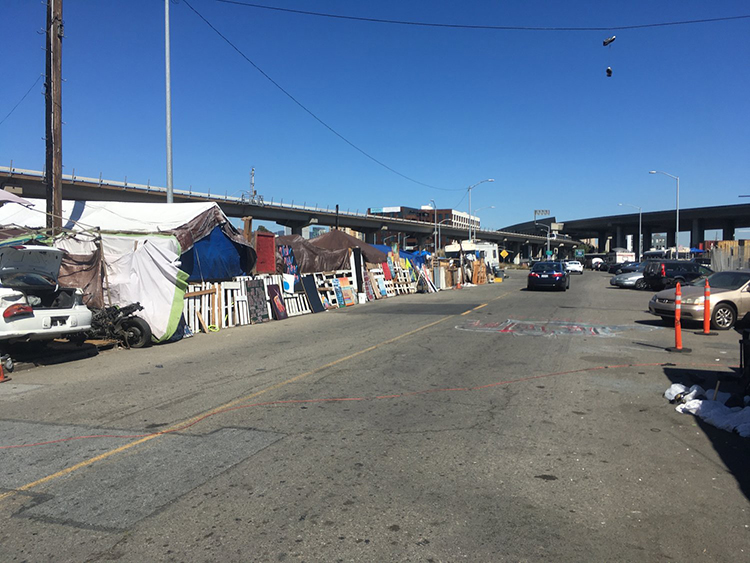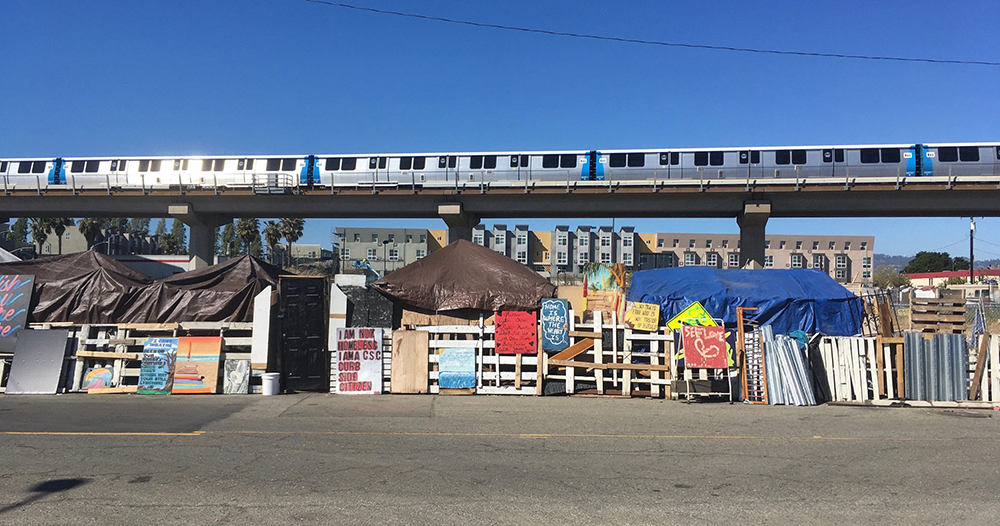Curbside Castle: Architecture and Aspiration at an Oakland Homeless Encampment
Ben Jameson-Ellsmore
The Fifth Street Natives homeless encampment spills from the sidewalk into the road on the north side of Fifth Street, one block from the BART (Bay Area Rapid Transit) Station in West Oakland, California. It is a dense, cohesive assemblage of scavenged materials forming a canyon wall in the street (figure 1 and 2). Scrap materials are bound together and leaned against utility poles and chain link fences, forming physical barriers around the encampment. Decorated with colorful hand-painted canvases, its façade shields a cluster of tarp-draped tents. In a neighborhood crisscrossed by transportation infrastructure connecting with large parking lots and warehouses for big rigs, the sounds of passing vehicles permeate the structure’s thin walls (figure 3). Nestled precariously in this liminal zone between industrial and residential districts, between a public street and a private lot, the encampment fights every day for its right to exist (figure 2).




